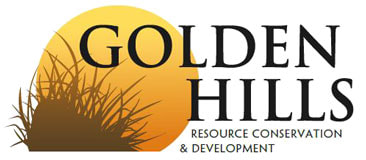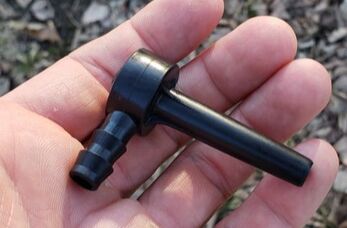|
At the end of winter, sap starts flowing from tree roots back up the trunk. This sap contains the vital nutrients that trees need to survive and thrive. We visited Waubonsie State Park in Fremont County on a warm day in early March to practice tapping trees with Park Manager Matt Moles. Always check with property managers before tapping trees on public lands. We received approval to do this for educational purposes. The process is a lot simpler than many people might expect. Basically you find a tree you want to tap and drill a hole that will fit the size of your spile. The hole should be at a slight upward angle to help the sap drip down the spile. If the sap is flowing, you will likely see it dripping out already. We used inexpensive plastic spiles found online but traditionally the spiles were made of metal. Next, attach a tube to the spile and tap the spile into the drilled hole so that it fits tightly and will not fall out of the tree. Measure beforehand to ensure the tubing will fit on your spiles. Below you can see the sap flowing from the spile into the tube. Put the other (bottom) end of the tube into some kind of container like a bucket placed on the ground. You could also hang the bucket on the tree and eliminate the need for the tubing. Make sure to wash the bucket, tubing, and spiles before and after each use, and don't use a bucket that has stored any toxic substances. Depending on the tree, the weather, and other factors, the sap my drip quite slowly or flow fairly rapidly like this one: It's best to cover the bucket to prevent insects, dust, and other debris from settling into the sap. Check the bucket regularly to make sure it doesn't overflow.
Now you've done the easy part! Turning the sap into syrup requires boiling it down until the water evaporates, leaving mostly sugar. Maples generally have higher sugar content than most other trees, which means it takes less boiling to get more syrup. Still, many other species can be tapped. Even with maples, a rough estimate is about 40 gallons of sap boils down to one gallon of maple syrup. For other species, the difference is even greater. If you don't have the right equipment to boil down that much sap, start small and try it out on your stovetop or over an outdoor fire. You can also skip the boiling process completely and drink the sap alone or with other beverages like coffee or tea. Sap, or maple water, as it's been branded, is marketed as a healthy alternative to sugary drinks. It has a slightly sweet taste and includes some nutrients and electrolytes. For more details on tapping trees, check out this recent blog post from Perennial Homestead.
0 Comments
Leave a Reply. |
Archives
June 2024
Categories
All
|
Address712 South Highway Street
P.O. Box 189 Oakland, IA 51560 |
ContactPhone: 712-482-3029
General inquiries: [email protected] Visit our Staff Page for email addresses and office hours. |


 RSS Feed
RSS Feed